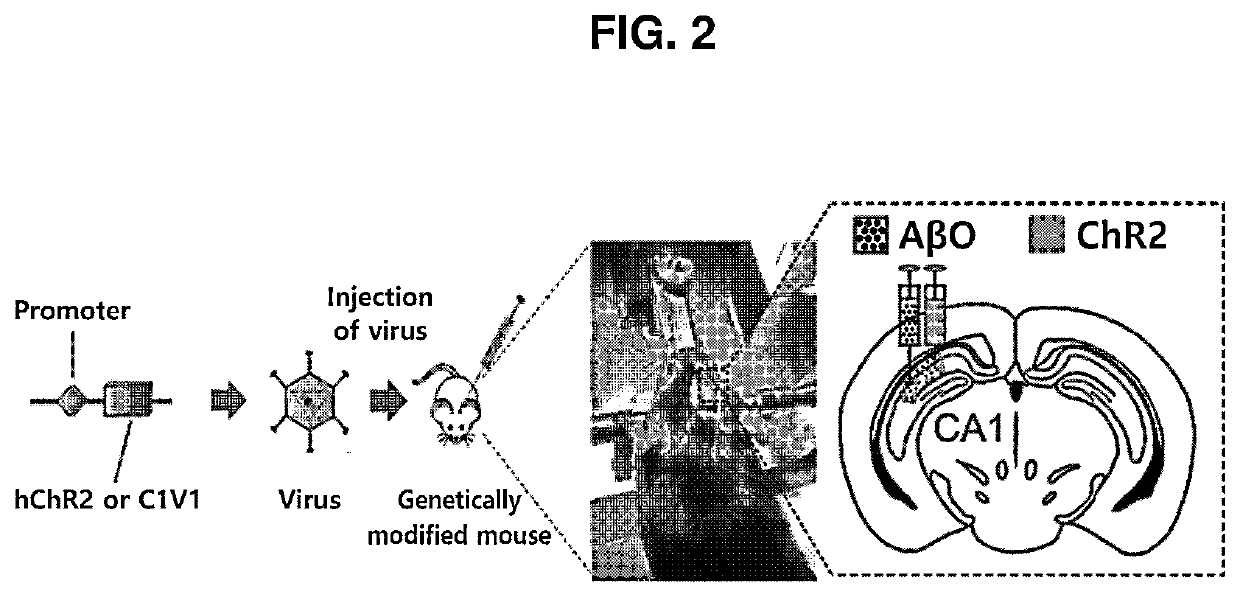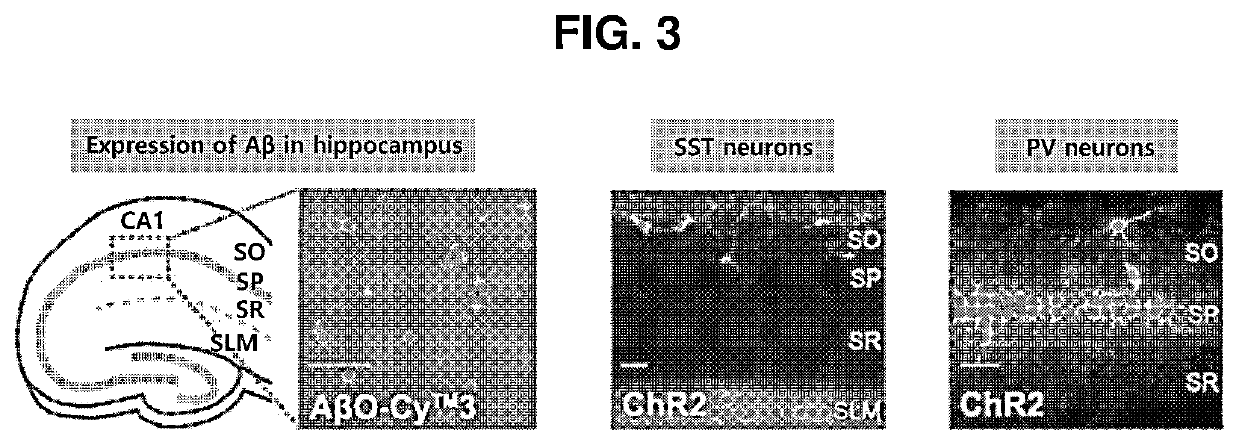Method by which brain with alzheimer's disease recovers from brain wave damage by using optogenetics
a brain wave and optogenetic technology, applied in the field of restoring brain wave impairment in alzheimer's brain, can solve the problems of loss of learning and memory, damage to neurons, and impairment of learning and memory in alzheimer's disease, and achieve the effects of restoring brain wave impairmen
- Summary
- Abstract
- Description
- Claims
- Application Information
AI Technical Summary
Benefits of technology
Problems solved by technology
Method used
Image
Examples
Embodiment Construction
> Restoration of Theta Wave Impairment in Alzheimer's Brain
[0066]1. Establishment of Alzheimer's Disease Animal Model Through Injection of Amyloid Beta Oligomers
[0067]Aβ monomers were suspended in an HFIP (hexafluoro-2-propanol) solvent at a concentration of 1 mM and then a film was formed by removing HFIP from the Aβ suspension using a vacuum evaporator. A 5 mM Aβ suspension was prepared by treating the Aβ film with a DMSO solvent while slowing the aggregation of Aβ. The Aβ suspension was diluted to 200 nM by treating with physiological saline and then soluble Aβ oligomers were synthesized by incubating in a refrigerator (4° C.) for about 12 hours.
[0068]3 μL of the synthesized Aβ oligomers were injected directly into the hippocampus CA1 of SST-CRE mice by a stererotactic method. The Aβ oligomers were injected at a speed of 100 nL / min using a microsyringe, and the microsyringe was held tight for 3 minutes so that the Aβ oligomers could spread well.
[0069]2. Injection of Virus for Opt...
PUM
| Property | Measurement | Unit |
|---|---|---|
| Wavelength | aaaaa | aaaaa |
| Wavelength | aaaaa | aaaaa |
| Wavelength | aaaaa | aaaaa |
Abstract
Description
Claims
Application Information
 Login to View More
Login to View More - R&D
- Intellectual Property
- Life Sciences
- Materials
- Tech Scout
- Unparalleled Data Quality
- Higher Quality Content
- 60% Fewer Hallucinations
Browse by: Latest US Patents, China's latest patents, Technical Efficacy Thesaurus, Application Domain, Technology Topic, Popular Technical Reports.
© 2025 PatSnap. All rights reserved.Legal|Privacy policy|Modern Slavery Act Transparency Statement|Sitemap|About US| Contact US: help@patsnap.com



